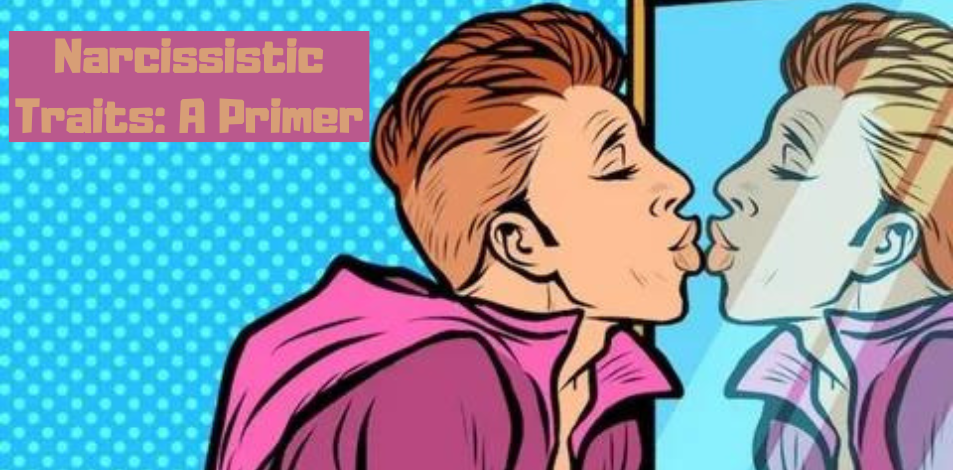
There are three basic types of narcissistic personality traits and each of these traits has a different impact on the individual. Ackerman et al. (2011) developed a scale to measure narcissistic traits and found that the traits fall into three separate factors: maladaptive traits, adaptive traits, and grandiose/exhibitionist traits that are neither categorically positive nor negative in and of themselves.
Maladaptive Traits
Maladaptive traits are those socially toxic traits that are associated with a sense of entitlement and undeserved privilege. They are also traits that predict an individual’s tendency to exploit others for their own benefit. In one recent study (Brewer et al., 2018), women were found to be less attracted to men whose facial features indicated the presence of negative narcissistic traits in their personality and would pass them over as potential short- or long-term romantic relationships.
Individuals who are high in these traits are those who use whatever charisma they have and whatever social skills they can develop to draw others into their network of influence and power. These are the traits we associate with psychopathic narcissists who leave a trail of damage and destruction behind them as they make their way through life. Unfortunately, individuals with high levels of maladaptive narcissism tend to require higher levels of external ego-stroking to maintain their performance. They are essentially emotional vampires who must court others in order to feed off their initial admiration. They build their social networks in order to suck up any positive acclaim they can from others.
Adaptive Traits
These traits are associated with leadership skills and a sense of power; they tend to help the narcissist succeed in both social and professional arenas. The main difference in the positive or negative impact of these narcissistic traits is thought to be the line between behaviors that occur at the expense of others. These narcissists have the ability to gain people’s trust in a variety of situations and use their positive self-image to reinforce others’ beliefs in their abilities and worth. Strong leaders with above-average adaptive traits of narcissism are still able to be a positive influence in the workplace. Their belief in themselves and their mission can attract the admiration and loyalty of their employees. In one study (von Känel et al., 2017), it was found that individuals high in adaptive narcissism were actually less likely to experience burnout at work. Their ability to see themselves in a very positive light has been suggested as a reason for their ability to successfully maintain a higher level of performance than those with higher levels of maladaptive narcissism.
Grandiosity/Exhibitionism
Grandiosity and exhibitionism are traits that we typically attribute to people we consider to be “self-centered” or “arrogant.” These traits can be relatively benign, although they can be annoying to those individuals who spend a lot of time in the company of this type of narcissist. Combined with maladaptive traits, these behaviors can be destructive to any healthy relationship. These individuals like to tell stories that construct their role in an interaction or event. They believe that they are “all that and more.” While these traits do not typically lead people to deviant or destructive behavior, if these individuals are unable to maintain their sense of “specialness” from others, they will abandon their current social circle and seek out new people who support their inflated view of themselves. Similar to individuals with negative traits of narcissism, these individuals are likely to have fragile self-esteem that requires constant praise from others along with self-flattering behaviors to maintain their ego.
I Rock, You Rolling?
The problem with narcissists is that their psychological makeup doesn’t allow space for the feelings of others in the relationship or any interactions. There is no empathy or compassion for what others are going through and this one-sided relationship will feel unbalanced once the typical non-narcissist has a moment to stop and think about what they are getting out of the relationship.
Narcissists can be fun at first, because they can be so attractive to others – whether it’s their looks or their attitude, skilled narcissists make you feel like just being around them is a dangerous turn-off! Not only does the narcissist shine, but everyone around them shines too!
Unfortunately, when your own needs start to surface or when the narcissist is exploiting your feelings, the skilled narcissist will “roll” on you and not take a moment to care about the damage they have caused. Empathy for others and empathy for their feelings are skills that are “learned” in order to take advantage of the other or are simply absent.
Why do narcissists try to make you jealous?
Finally, when it comes to romantic relationships, narcissists may be experts at attracting partners, but they are miserably bad at maintaining healthy—or even remotely resembling—relationships over the long term. They view partners as trophies for their power over others and may expect sycophantic behavior throughout the relationship. Narcissists create situations that generate jealousy in their partners in order to gain power and control in the relationship, and narcissists with fragile egos incite jealousy to get back at their partners, test the relationship, prove the security of the relationship, and build their self-esteem. For narcissists of any type, relationships are simply vehicles to be built to help them in their attempt to gain the status and esteem—no matter how fleeting or insincere—that they need to maintain their fragile sense of self.




